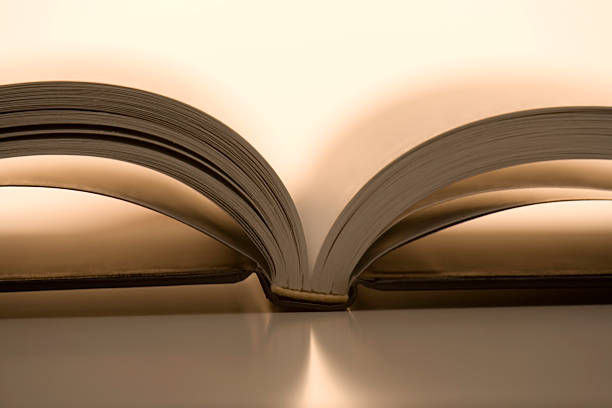
Dive into the realm of perfect binding, celebrated for its refined simplicity in creating softcover books and magazines. This method, dating back to the 1930s, has evolved into a premier publishing standard. It’s ideal for achieving a sleek, professional finish without hard covers. For authors or printing enthusiasts, this guide offers an in-depth look at perfect binding. It’s your ticket to mastering this elegant technique.
Key Takeaways
- Perfect binding provides a professional finish suitable for a wide array of books and magazines.
- Optimised for publications with 50 pages and above, it triumphs over saddle stitching for larger books.
- An innovative solution for publications with spines measuring a minimum of 2mm, ensuring a clean, square spine.
- Count on durable, long-lasting results with a binding technique that enhances both structural integrity and aesthetic appeal.
- Select companies like BookBaby and Printivity that provide customization options and expedited services to meet various perfect binding needs.
- Rely on the prompt delivery and customisable services offered by printing authorities such as Printing Center USA and Barnes & Noble Press.
- Appreciate the multifunctional use of perfect binding, from corporate brochures to family history books, ensuring a strong, lasting bond that stands the test of time.
Understanding Perfect Binding
Looking at the perfect binding method, we uncover a story filled with historical significance and modern innovation. It became a key player in publishing during the 1930s, promising efficient book creation. Since then, it has adapted to the needs of today, maintaining its place in the industry.
History and Invention of Perfect Binding
In 1895, perfect binding emerged, changing the course of bookmaking history and becoming one of the most popular techniques for bookbinding. By the 1930s, it had transformed the production of paperback books as a far more cost effective option. This innovation significantly reduced production time and cost, which was a game-changer for the spread of literature and information.
Defining Perfect Binding and Its Dominance in Publishing
Perfect binding leads the binding options, as it stands out with its smooth exterior and robust, flexible spine. It achieves this through the application of a strong adhesive, often polyvinyl acetate (PVA) or PUR Glue, which binds the pages securely. This technique is preferred for a wide range of materials, from novels to corporate reports, for its reliability and polished appearance.
Pros and Cons: Is Perfect Binding Right for You?
Perfect binding’s strengths include affordability and a polished look, yet it does have some drawbacks. It doesn’t suit projects like photo albums that require flat opening. Also, excessively thick or thin volumes might pose a challenge. Nonetheless, it remains a top choice for mainstream book projects, underscoring its significance within the market.
| Feature | Advantages | Limitations |
|---|---|---|
| Binding Method | Cost-effective for mass production | Not suitable for all book types (e.g., hardcovers) |
| Adhesive Used | PUR offers strength and flexibility | Needs proper grain direction for best results |
| Common Uses | Ideal for novels, magazines, reports | Not ideal for books requiring flat-opening |
| Page Requirements | Flexible, needs only to be multiple of 2 | Spine must be at least 2mm thick |
Knowing the ins and outs of perfect binding empowers publishers and bookbinders to choose the best methods for specific projects. This ensures the quality and longevity of their products in the demanding publishing world.
The Process of Perfect Binding Explained
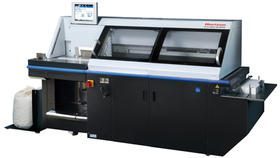
Perfect binding is key when bringing together magazines, books, and catalogs for a sharp, professional look. Knowing the steps, from creating the book block to adding the cover, helps us understand its importance. This knowledge reveals how these steps help in making perfectly bound books.
Preparing the Book Block
The first stage is to create the book block. This involves gathering and accurately aligning all printed pages, focusing on the spine. The preparation of the spine is vital. It must be perfectly square to look clean. It is then roughened to allow the glue to grip, making the binding strong.
Adhesives and Their Role in Binding Durability
Choosing the right adhesive is next in the process. The adhesive greatly affects the durability of the binding. Polyvinyl acetate (PVA) glue is a common choice for its strong adherence and flexibility. This strength is crucial as alterations are difficult post-binding.
Attaching the Cover
Finally, the cover is attached. It uses a sturdy card stock or fine paper to protect and enhance the book’s appearance. Ensuring the cover is properly aligned and glued is essential. It’s then pressed firmly to securely bind it with the book block.
For a closer look at perfect binding’s capabilities, consider the comparative data below:
| Binding Technique | Typical Use | Maximum Output per Hour |
|---|---|---|
| Perfect Binding | Books, Magazines, Catalogues | 18,000 units |
| Saddle Stitch Binding | Pamphlets, Small Magazines | 6,000 units (Three-knife trimmers) |
This table showcases the versatility and efficiency, particularly in high-output settings, of perfect binding.
Comparing Perfect Binding with Other Binding Techniques
In the domain of book manufacturing, the choice of binding technique greatly affects how a book looks, lasts, and functions. Perfect binding often competes with methods like saddle stitch, spiral binding, and thread binding. Each of these has its strengths, making them suitable for different kinds of books and demands.
Perfect binding exudes elegance, making it perfect for paperbacks, corporate reports, and refined catalogs. It stands out for accommodating high page counts, usually over 96 pages, ideal for thick publications. The square spine and secure, yet flexible, adhesive are its hallmarks.
Saddle stitch, in contrast, shines with smaller booklets and brochures, covering about 48 pages max. It’s budget-friendly and quick to produce, which is perfect for materials that need updates often or for large events like conferences.
Spiral binding scores points for laying completely flat when open. This aspect is ideal for cookbooks, manuals, and other guides that are used frequently and benefit from the ability to stay open by themselves. It also ensures effortless page-turning without damaging the book.
Thread binding introduces a handcrafted vibe that machine bindings can’t match. It’s a standout for special editions and art books, elevating their visual and tactile appeal significantly.
| Binding Method | Suitable For | Page Count | Cost Efficiency | Durability | Turnaround Time |
|---|---|---|---|---|---|
| Perfect Binding | Paperback books, directories | Over 96 pages | Medium | High | Medium |
| Saddle Stitch | Brochures, booklets | Up to 48 pages | High | Low to Medium | Fast |
| Spiral Binding | Manuals, cookbooks | Variable | Medium | Medium | Medium to Fast |
| Thread Binding | Art books, limited editions | Variable | Low | High | Slow |
When choosing a binding method, consider the publication, its intended use, and your budget. While perfect binding is often the go-to for durability and a professional look, every method is purposeful and fits specific publication types best. Knowing your project’s needs will lead you to the most suitable binding choice.
Materials Required for Perfect Binding
When it comes to perfect binding, choosing the correct materials is key. They impact the paper quality, the book’s strength, and how it looks. This includes the paper, cover stocks, and adhesives you pick. Knowing about these basics can make or break your binding project.
Selection of Paper and Cover Stocks
Think about paper and cover choices carefully in perfect binding. For covers, typically 300gsm to 350gsm paper is chosen. It’s strong and lets you apply different finishes, such as glossy UV or textured linen. These options are critical for the book’s durability and its visual appeal.
Choosing the Right Adhesives for Perfect Bound Books
Adhesives are vital for the durability of perfect binding. Polyvinyl acetate (PVA) glue is a top choice for its strength and flexibility. It helps the book last longer. Hot melt adhesives are essential for keeping the pages and covers together, ensuring they don’t come loose with regular use.
Now, let’s compare key materials in perfect binding:
| Material | Description | Common Usage |
|---|---|---|
| Paper (300-350gs) | Provides book covers with strength and is perfect for the outer layer. | Book covers, detailed reports |
| PVA Glue | Tough and flexible, this glue is excellent for binding the book’s spine. | Attaching book contents to covers |
| Glossy UV Laminate | It’s a protective, shiny finish applied to cover stocks. | Boosts the eye appeal and endurance of covers |
Using the right binding materials boosts both the practicality and beauty of your books. This meets the needs of those creating books and those enjoying them.
Steps to Create a Perfect Bound Book
The process of creating perfect bound books blends meticulous detail with a rewarding outcome. Each step, from clamping the spine to applying the cover, demands precision to ensure the best results. By following these steps closely, you can achieve a finish that’s truly professional.
Squaring and Clamping the Spine
Initiating the bookbinding process, perfect alignment and arrangement of paper is essential. Squaring the page edges is necessary for an even front cover spine. The spine is then clamped securely. Clamping helps keep the interior pages in position, avoiding any disturbance during adhesive application. This step not only stabilizes the book but also supports the even distribution of glue.
Applying Even Layers of Adhesive
The efficacy of a perfect bound book heavily relies on adhesive layers. Using polyvinyl acetate (PVA) adhesive offers a durable finish. PVA, known for its strength and flexibility, is ideal for books frequently accessed. After the base layer, add more coats, ensuring the spine’s thickness guides the number. Normally, two to three coats are adequate for slim spines, with up to eight for thicker ones.
Cover Application and Finishing Touches
Finalizing perfect bound books involves meticulous cover selection and application. Opt for a sturdy yet visually appealing cover like 350gsm Artboard. The cover is scored and folded precisely to match the text block’s dimensions. Once aligned, pressing the cover onto the spine ensures its secure attachment. Drying under pressure, such as a book press, is crucial for a flawless, professional outcome.
The perfect bound book creation is an art that aims to enhance the reader’s experience. It transitions from an expertly crafted cover to the stories within. Every step, from spine clamping to cover attachment, contributes significantly to the book’s feel and look.
Why Choose MVP Print for Perfect Binding
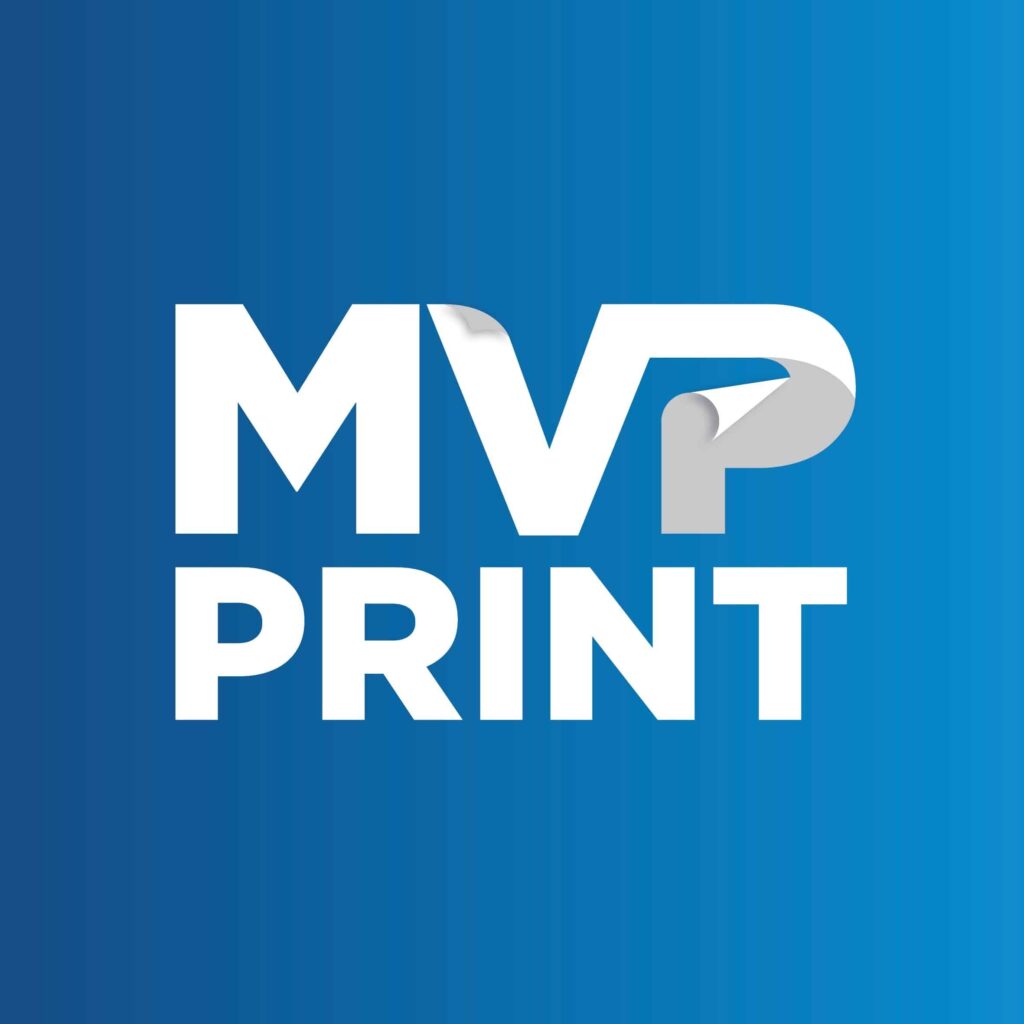
At MVP Print, creating perfectly bound documents is more than a job; it’s a craft. They blend cutting-edge PUR binding with extensive industry experience. This leads to top-tier quality book production unmatched in the industry.
Customisation and Printing Options
MVP Print stands out for its ability to cater to all perfect binding needs, offering remarkable customisation and printing choices. They provide innovative cover designs and a wide range of paper types, including glossy, matte, and top-notch recycled options. By using PUR adhesive, they ensure maximum durability, making your books last longer. This is crucial for manuals, textbooks, and any book that sees constant use. MVP Print turns your binding project into a timeless masterpiece, reflecting your unique style and vision.
Comprehensive Support and Expertise
MVP Print goes beyond excellent binding support. They offer expert advice every step of the way, ensuring your book is not just beautiful but also functional. Their team carefully considers everything, from the paper’s weight to the binding method, to ensure it meets your standards. The use of PUR binding techniques adds extra strength, making your books resilient in any condition. This results in consistently high-quality products that exceed expectations.
| FeatureDescriptionMVP Print Advantage | ||
|---|---|---|
| Durability | PUR adhesive offers up to 50% stronger bonds and enhanced temperature stability. | Publications maintain integrity in diverse climates and frequent use. |
Advantages of Perfect Binding for Various Publications
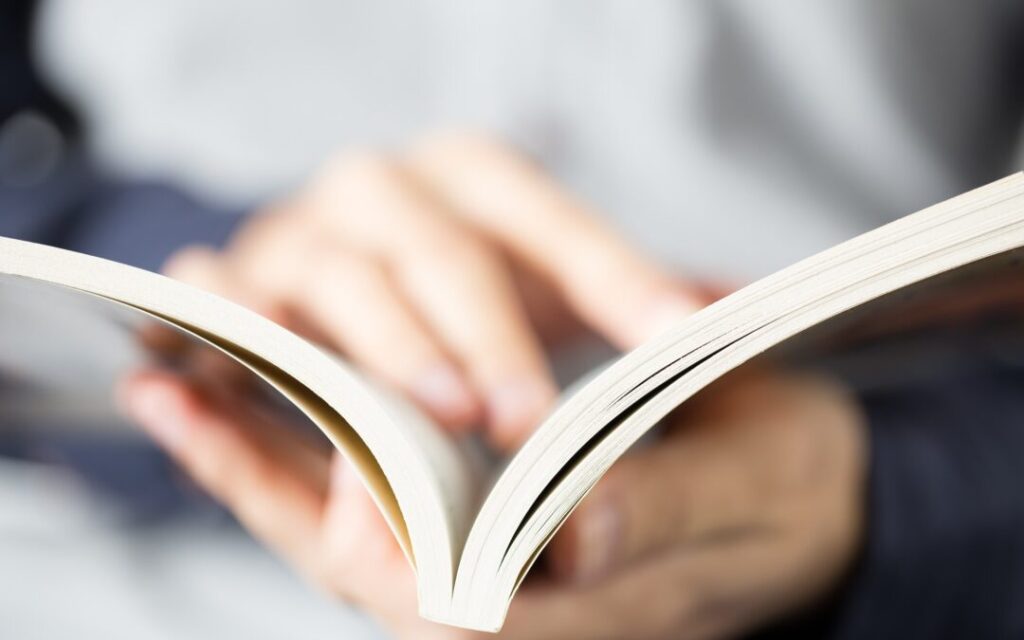
Perfect binding is famed in the publishing realm for its budget-friendly nature alongside its adaptability. It’s a preferred method for various works like books and magazines. Not only does it elevate the visual charm but also ensures a polished, professional impression.
Visual Appeal and Professional Finish
The elegance in the appearance and finishing of perfect bound items is unparalleled. It lets the spine remain flat, ideal for a continuous design that boosts the overall look. This polished finish is a magnet for readers, making it great for anything needing to look sharp, like portfolios or graphic novels. It plays a vital role in attracting buyers and ensuring wide appeal.
Popular Publications That Benefit from Perfect Binding
- Corporate Reports: Imparts a sleek, professional look essential for business presentations.
- Magazines: Supports high-quality cover finishes that appeal to a visual audience.
- Novels and Non-fiction Books: Offers resilience and a comfortable reading experience with thicker spine options.
- Catalogs and Directories: Handles thicker dimensions efficiently, making it easy to include vast amounts of information.
| Publication Type | Advantages of Perfect Binding |
|---|---|
| Graphic Novels | Supports heavy ink coverage and thick paper use, enhancing visual storytelling. |
| Non-Fiction Books | Allows for inclusion of extensive page counts without sacrificing form or function. |
| Portfolios | Enables a cleaner, tidier presentation of artworks or professional projects. |
| Magazines | Achieves high-quality finish with options for gloss or matte lamination. |
In sum, perfect binding’s merit lies in its blend of being a cost-effective choice while delivering a top-notch, professional finish. It’s the go-to option whether crafting a corporate report, a vibrant magazine, or an enthralling novel. Perfect binding transforms the product, ensuring it not only looks great but also remains durable, making a significant impression.
Common Misconceptions About Perfect Binding
Perfect binding is often favoured for its sleek appearance and affordability. Despite this, certain falsehoods persist, casting doubt on its reliability and strength. This leads some to question its appropriateness for works such as softcover books, magazines, and company reports. We aim to correct these erroneous beliefs and highlight the true merits of perfect binding.
Myth: Perfect Binding is Not Long-Lasting
The durability of perfect bound books is widely underestimated. While the binding employs glue, recent adhesive and technique advancements bolster its strength. These upgrades mean perfect binding can now securely hold pages, surviving constant use. As a result, it’s not just for daily materials but also for utilitarian items like textbooks and manuals, proving it’s a durable binding method.
Myth: Perfect Bound Books Cannot Lay Flat
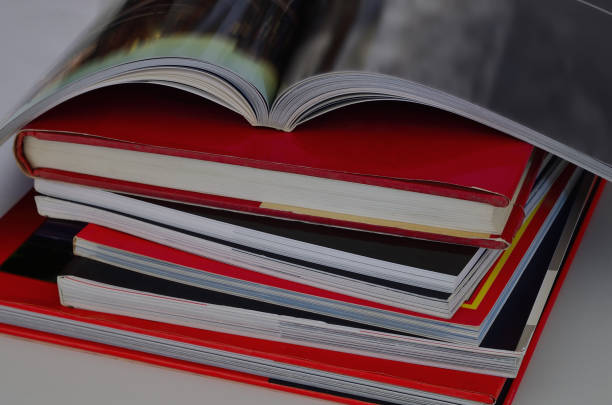
A prevailing myth holds that perfect bound books will not lie flat. Technological progress, however, has rendered this false. By implementing special adhesives and precise binding, modern perfect bound books can indeed sit open and flat. This innovation particularly benefits readers of cookbooks and instructional manuals, ensuring a flat lay and improving the experience.
| Binding Type | Cost | Page Capacity | Key Features |
|---|---|---|---|
| Perfect Binding | High (except for Casebound) | Up to 200 pages | Spine printing capability, lay-flat option |
| Squarefold Booklets | Comparable to Saddle Stitching | Up to 200 pages | Less expensive than Perfect Binding, similar functionality |
| Saddle Stitching | Lower | Up to 100 pages | Suitable for magazines, newsletters |
| Wiro/Cerlox Binding | Medium | Varies | Flexible use, can open flat |
This table underlines the plethora of choices available, highlighting perfect binding’s unique mix of style and ruggedness. By dispelling misconceptions about perfect binding, we enlighten others on its critical role in contemporary publishing and presentation.
Designing Perfect Bound Book Covers
Designing perfect bound covers transcends basic paper-wrapping. It’s an intricate amalgamation of cover design, spine scoring, and overall aesthetics. These aspects come together to create a book that not only looks professional but is also marketable. The cover’s texture and graphic alignment are pivotal in its appeal.
The cover of a perfect bound book marks the initial meeting between reader and content. It is essential to select the best materials and designs for this first impression. Premium card stocks are common, often uplifted by gloss, matte, or satin finishes. Spine scoring’s function is to aid cover flexibility, preventing stress on the binding.
The essence of the book is encapsulated in its cover. It might be a minimalistic statement or a bold artistic proclamation. Regardless, the cover silently but effectively beckons to the prospective reader. It goes beyond appearance, merging aesthetics with practicality.
| Cover Feature | Specifications | Cover Purpose |
|---|---|---|
| Bleed | 5mm for soft cover, 15mm for hard cover | Ensures edge-to-edge cover design without unsightly borders |
| Spine Scoring | Depends on cover thickness and flexibility | Allows cover to fold more efficiently, reducing wear |
| Material | Heavy card stock (satin, glossy, or textured finish) | Enhances tactile sensation and durability |
| Margins | 12mm on outer edges, 18mm on binding edge | Optimal space for design elements and cover usability |
Selecting the correct parameters for a perfect bound cover is critical. This can include ensuring the spine aligns with the page count and paper thickness or weight. A well-designed cover not only enhances the book’s aesthetics but also its practical use. For publishers and self-publishers, the cover’s professional appearance is vital. It signals quality content to the reader, underscoring the significance of wise investment in cover design.
Innovations in Perfect Binding Technology
The book production field is always looking for ways to make better, faster books. Innovations in perfect binding technology are key. They’re making books not only quicker to make, but also more durable. This is all thanks to advanced adhesives and the rise of automation in bookbinding.
Enhanced Adhesives and Durable Materials
Perfect binding has been revolutionized thanks to advanced adhesives like Polyurethane Reactive (PUR). These new adhesives make books stronger and more flexible. This is especially important for books that need to last a long time, such as textbooks or books in libraries.
Durable materials for binding have also seen major advancements. This ensures the spine of the book stays strong over time.
The Future of Perfect Binding: Automated Systems
Automation is changing the bookbinding industry for the better. New machinery is faster, more precise, and can switch between book formats quickly. This reduces mistakes and downtime, offering books of higher quality in a shorter time.
The trend is moving towards AI-integrated systems. These will predict when maintenance is needed, improving overall efficiency and reliability.
The table below showcases the latest in perfect binding technology:
| Model | Hourly Production | Adjustability | Space Efficiency | Sustainability |
|---|---|---|---|---|
| Bindwel Insta | Up to 1,000 books | Highly flexible | Standard | Energy efficient |
| Bindwel Ekam | N/A | Fixed for specialized production | Reduces part count by 15%, Freeing 50% floor space | Lean manufacturing |
| Bindwel Freedom | Variable, suitable for 5 to thousands | Format switch in under a minute | Standard | Reduced maintenance costs |
These advancements mean more than just better books. They also focus on being more eco-friendly and efficient. Looking to the future, the bookbinding industry is moving towards being highly sustainable and productive. Watch out for exciting developments, especially at key events like Drupa 2024.
Choosing the Right Book Printing Service
Selecting the right book printing service is vital for authors. Your choice directly shapes your book’s quality and look in a crowded market. It plays a key role in its market acceptance. With a myriad of providers, choosing one that meets high standards and fits your needs is essential.
What to Look for in a Perfect Binding Provider
An ideal perfect binding provider brims with top-notch printing gear and a wide array of custom options. They should handle various binding methods, such as soft and hardcover, and meet your unique print needs. They must offer diverse paper grades, trim sizes, and finishes for a distinctive touch. By focusing on quality, they aim to make your book durable and visually appealing.
The Importance of Quality Control in Book Production
Binding’s quality control stands as a critical factor when picking a book printing service. They should adhere to strict quality checks to squash any production faults before they reach you. This step ensures your books meet the high standards set by professional publishers. Upholding attention to detail enhances the satisfaction you’ll derive from the end product.
| Feature | Benefit |
|---|---|
| Advanced printing and binding technology | Ensures high-quality production and durability of books |
| Customisation options | Allows for uniqueness and specification adherence in book design |
| Competitive pricing | Makes professional book printing accessible for all budgets |
| Quick turnaround and reliable delivery | Meets urgent publishing deadlines and enhances customer satisfaction |
| Exemplary customer service | Provides support and facilitates effective communication throughout the printing process |
Opt for a book printing service dedicated to quality and client happiness. Look for options that cater to various needs, from novels to textbooks. Choosing wisely can significantly boost your publication’s success.
Conclusion
Wrapping up our exploration of perfect binding, this approach stands out for its balance between affordability, durability, and beauty. It has become a top pick for many in the realm of professional publications. Perfect binding makes its mark on bookshelves and in readers’ hands, serving a range of works like novels and textbooks. MVP Print showcases the peak of what perfect binding can offer, ensuring excellence in every binding project.
When opting for perfect binding, its adaptability and the robustness of the binding adhesives are key. These features make sure books last through many readings and over time, especially useful for larger volumes. The ease of storing and saving space with perfectly bound books adds to its appeal, making it a smart choice for those creating books. This method, although it doesn’t allow books to lay completely flat, brings about numerous advantages, making it a wise selection for various needs.
Looking ahead, perfect binding is poised to become even more efficient and dependable. This advancement ensures top quality at competitive prices, particularly for extensive printing projects, when partnering with experts like MVP Print. Thus, perfect binding remains a cornerstone of the publishing industry, offering a refined and sturdy finish for any book endeavor.
FAQ
What is perfect binding and how is it used in publishing?
Perfect binding creates soft cover books by gluing their internal pages at the spine. This method uses a strong adhesive. It’s a popular choice for items like paperback books, magazines, and catalogues. This is due to its sleek appearance and affordability.
When was perfect binding first used in book manufacturing?
The concept of perfect binding dates back to 1895. However, it wasn’t widely adopted until the 1930s. This was especially true when it comes to the mass production of paperbacks.
Can perfect binding be used for hardcover books?
In general, hardcover books do not feature perfect binding. They rely on different methods to ensure they open flat and maintain their robustness. This includes stitching and more intensive gluing techniques.
What are the pros and cons of perfect binding?
Perfect binding offers a sleek, professional finish and is cost-effective. It works well with a broad array of publications. Yet, it’s not suitable for items that must remain perfectly flat when open. Nor is it the best choice for volumes that are either very thin or very thick.
How do I prepare the book block for perfect binding?
To ready the book block, arrange and align the pages evenly at the future spine. Trim them to have a smooth, even edge. Then, ensure the edge is slightly rough to improve glue adherence.
What type of glue is used in perfect binding?
Polyvinyl Acetate (PVA) is the preferred glue for perfect binding. Known for its strength, flexibility, and durability, it secures the pages of the book block effectively.
How does perfect binding compare to other binding methods such as saddle stitch or spiral binding?
For books with more pages and a desire for longevity, perfect binding excels. Saddle stitch works better with fewer pages, like brochures, for example. Spiral binding is the answer when flat opening is essential, good for manuals and workbooks.
Are there specific types of paper and cover stocks recommended for perfect binding?
Indeed, heavier paper, around 300 to 350gsm, is suggested for covers. Different textures and finishes can be applied to augment both the look and durability of the product.
Can perfect bound books lay flat?
Though older perfect bound books would not lay entirely flat, today’s improved binding techniques and materials allow for more flexibility. Now, they can lay considerably flatter than before.
What is involved in designing a perfect bound book cover?
When creating a cover, think about the materials and finishes for both attraction and tough quality. Ensure the spine is wide enough to house all pages and develop a design that marries well with the book’s content.
Are there innovations in perfect binding that improve the binding process?
Advances in adhesive clarity and flexibility have been made, as have automated systems for more consistent and efficient binding. These enhancements have definitely refined the perfect binding process.
What should I look for in a perfect binding book printing service?
Opt for a service with a proven track record, offering a variety of customisation, and a clear focus on quality. This ensures you get a top-notch final product for your project.








